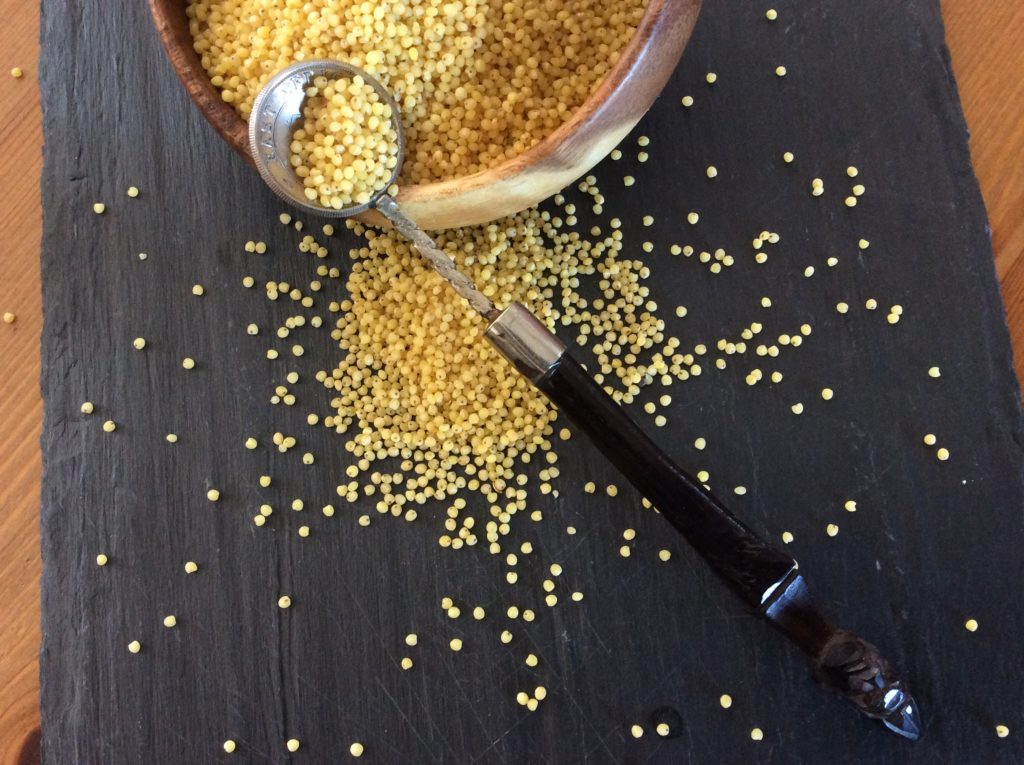Millets are major source of energy and unique among the cereals (as wheat, rice, and maize) because of their high calcium, iron, potassium, magnesium, phosphorous, zinc, dietary fiber, polyphenols, and protein content. (Hulse et al., 1980; Devi et al., 2014; Gupta et al., 2014). Millets also have higher fat content than maize, rice, and sorghum (Obilana and Manyasa, 2002).
Millets are gluten-free, ideal for people who are gluten-intolerant, though millet flour cannot be used for raised bread (Hulse et al., 1980; Thompson, 2009; Amadou et al., 2013; Santra, 2013).
Millets are easy to digest. They contain a high amount of lecithin, which provides excellent support for nervous system health by helping to restore nerve cell function and intensify brain cell metabolism. Millets are also rich in micronutrients such as niacin, B-complex vitamins, Vitamin B6, and folic acid (Hulse et al., 1980; Pathak, 2013).
- Amadou I., Gounga M. E., Le G. W. (2013). Millets: nutritional composition, some health benefits and processing-A review. Emirates J. Food Agric. 25 501–508. 10.9755/ejfa.v25i7.12045
- Devi P. B., Vijayabharathi R., Sathyabama S., Malleshi N. G., Priyadarisini V. B. (2014). Health benefits of finger millet (Eleusine coracana L.) polyphenols and dietary fiber: a review. J. Food Sci. Technol. 51 1021–1040. 10.1007/s13197-011-0584-9
- Gupta S., Shrivastava S. K., Shrivastava M. (2014). Proximate composition of seeds of hybrid varieties of minor millets. Int. J. Res. Eng. Technol. 3 687–693. 10.15623/ijret.2014.0302122
- Hulse J. H., Laing E. M., Pearson O. E. (1980). Sorghum and the Millets: Their Composition and Nutritive Value. London: Academic Press, 187–193.
- Obilana A. B., Manyasa E. (2002). “‘Millets’,” in Pseudocereals and Less Common Cereals, eds Belton P. S., Taylor J. R. N., editors. (Berlin: Springer; ), 177–217.
- Pathak H. C. (2013). Role of Millets in Nutritional Security of India. New Delhi: National Academy of Agricultural Sciences, 1–16.
- Santra D. K., Heyduck R. F., Baltensperger D. D., Graybosch R. A., Nelson L. A., Frickel G., et al. (2015). Registration of ‘Plateau’waxy (amylose-free) proso millet. J. Plant Regist. 9 41–43. 10.3198/jpr2013.11.0067crc.
- Thompson T. (2009). “The nutritional quality of gluten-free foods,” in Gluten-free Food Science and Technology, ed. Gallagher E., editor. (Hoboken, NJ: Blackwell Publishing Ltd; ), 42–51.
